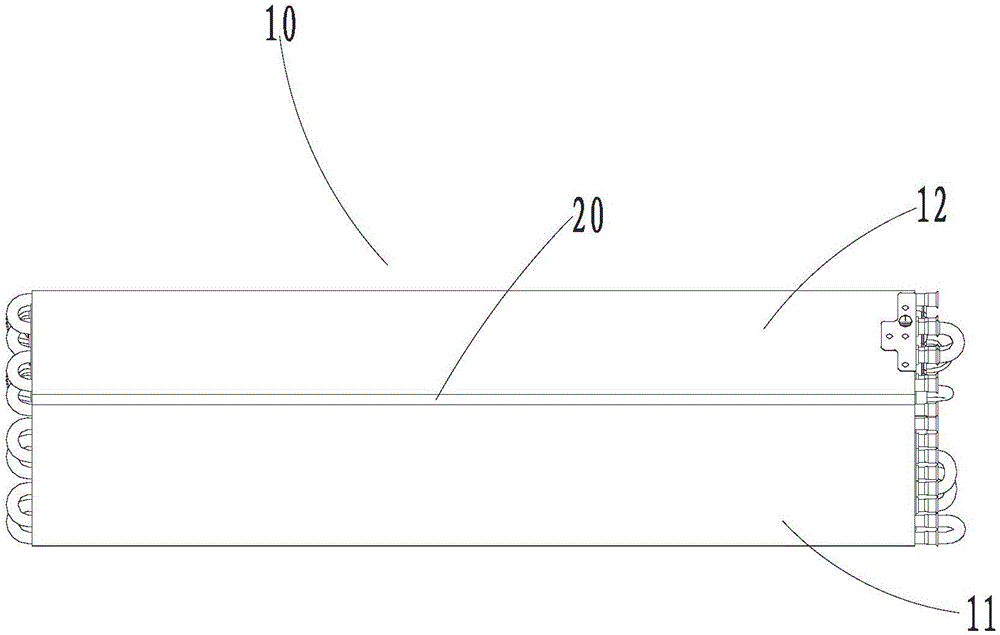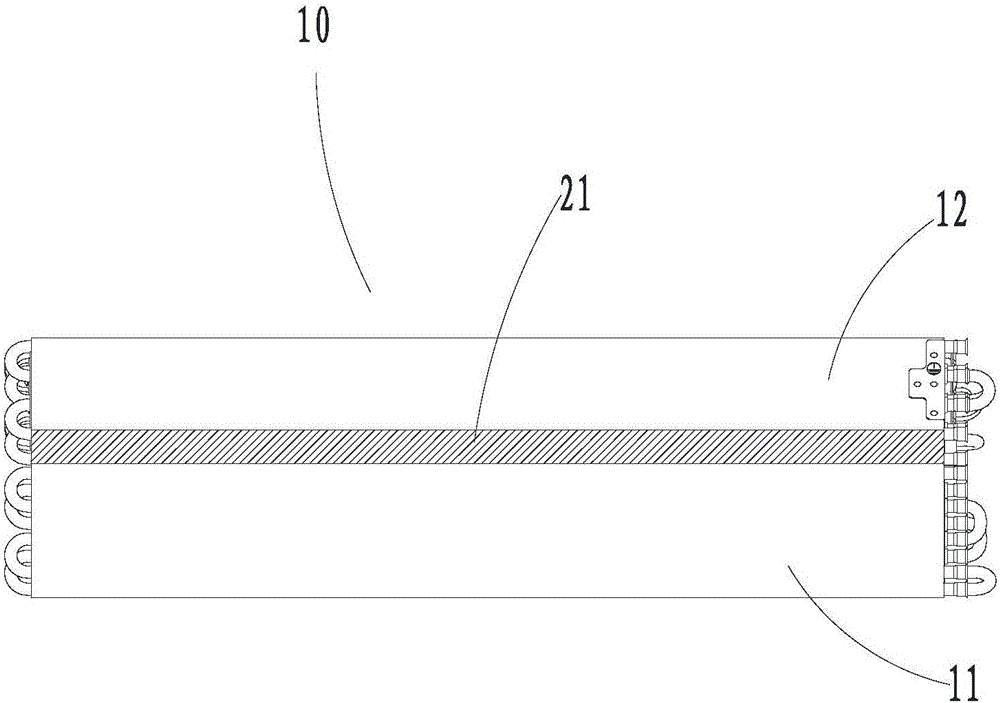Heat exchanger assembly splicing and sealing method and heat exchanger
A technology of heat exchangers and components, which is applied in the field of heat exchange, can solve problems such as warping and falling off, and achieve the effects of improving energy efficiency, saving consumption, and reducing costs
- Summary
- Abstract
- Description
- Claims
- Application Information
AI Technical Summary
Problems solved by technology
Method used
Image
Examples
Embodiment 1
[0045] Heat and soften 10kg of hot-melt adhesive that meets the above technical indicators into a molten state, and while stirring, let in nitrogen gas equivalent to 1 times the volume of the hot-melt adhesive at room temperature and pressure, and stir the generated bubbles evenly.
[0046] The heat exchanger components are spliced together according to the design requirements. In this embodiment, a heat exchanger containing three heat exchanger components is taken as an example, and the first heat exchanger component and the third heat exchanger component are spliced respectively On both sides of the two heat exchanger components, there is a splicing gap between the first heat exchanger component and the second heat exchanger component and between the second heat exchanger component and the third heat exchanger component, at the splicing gap The above-mentioned hot melt adhesive is applied by a gluing manipulator. It is advisable to apply the amount of hot melt adhesive t...
Embodiment 2
[0051] Heat and soften 10kg of hot-melt adhesive that meets the above technical indicators into a molten state, and while stirring, let in air equivalent to twice the volume of the hot-melt adhesive at normal temperature and pressure, and stir the generated air bubbles evenly.
[0052] The heat exchanger components are spliced together according to the design requirements. In this embodiment, a heat exchanger containing three heat exchanger components is taken as an example, and the first heat exchanger component and the third heat exchanger component are spliced respectively On both sides of the two heat exchanger components, there is a splicing gap between the first heat exchanger component and the second heat exchanger component and between the second heat exchanger component and the third heat exchanger component, at the splicing gap Apply the above-mentioned hot-melt adhesive by the glue-applying manipulator, and the amount of the hot-melt adhesive to be applied is pre...
Embodiment 3
[0054] Heat and soften 10kg of hot melt adhesive that meets the above technical indicators into a molten state, and while stirring, let in carbon dioxide gas equivalent to 3 times the volume of the hot melt adhesive at room temperature and pressure, and stir the generated bubbles evenly.
[0055] The heat exchanger components are spliced together according to the design requirements. In this embodiment, a heat exchanger containing three heat exchanger components is taken as an example, and the first heat exchanger component and the third heat exchanger component are spliced respectively On both sides of the two heat exchanger components, there is a splicing gap between the first heat exchanger component and the second heat exchanger component and between the second heat exchanger component and the third heat exchanger component, at the splicing gap Apply the above-mentioned hot-melt adhesive by the glue-applying manipulator, and the amount of the hot-melt adhesive to be app...
PUM
| Property | Measurement | Unit |
|---|---|---|
| Softening point | aaaaa | aaaaa |
Abstract
Description
Claims
Application Information
 Login to View More
Login to View More - R&D
- Intellectual Property
- Life Sciences
- Materials
- Tech Scout
- Unparalleled Data Quality
- Higher Quality Content
- 60% Fewer Hallucinations
Browse by: Latest US Patents, China's latest patents, Technical Efficacy Thesaurus, Application Domain, Technology Topic, Popular Technical Reports.
© 2025 PatSnap. All rights reserved.Legal|Privacy policy|Modern Slavery Act Transparency Statement|Sitemap|About US| Contact US: help@patsnap.com



